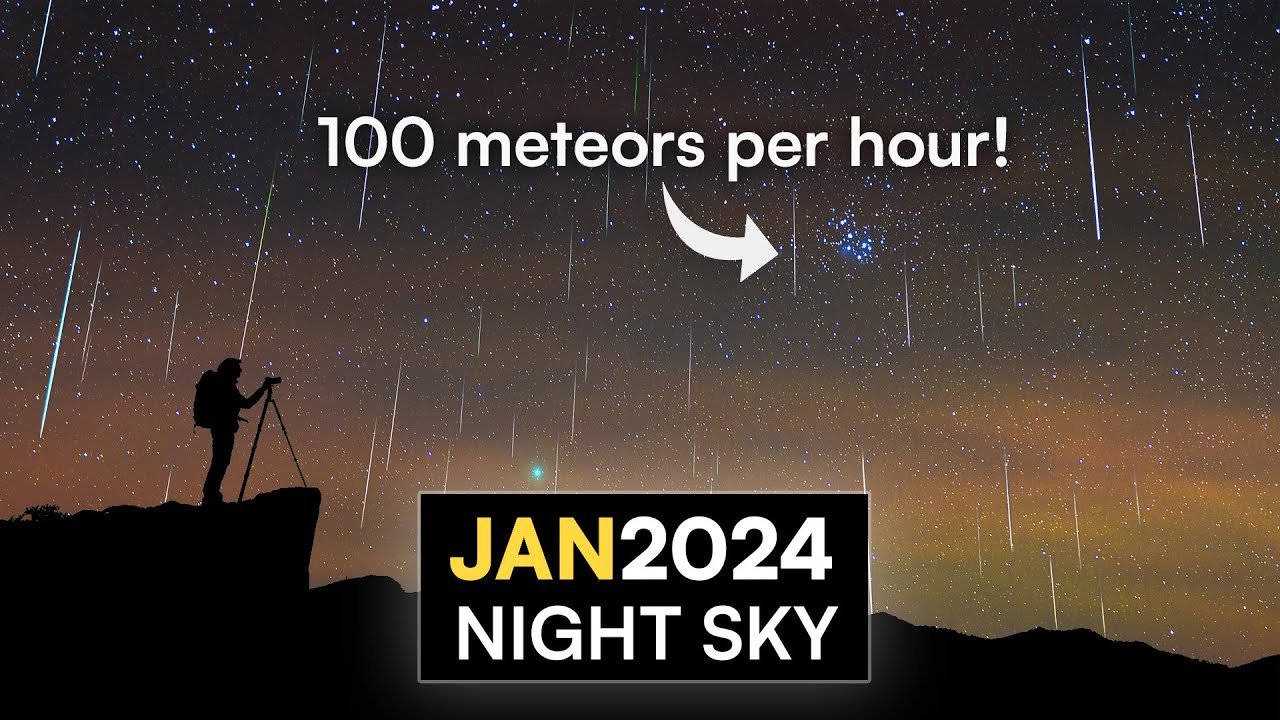Stargazing enthusiasts eagerly await meteor showers, where celestial fireworks light up the night sky, providing a breathtaking spectacle.

In 2024, several major meteor showers will captivate observers worldwide.
This article explores the best meteor showers of the year, offering tips on when and where to watch, and what makes each event unique.
What Are Meteor Showers?
Meteor showers occur when Earth passes through the debris trail left by a comet.
These tiny particles, often no larger than a grain of sand, burn up upon entering Earth’s atmosphere, creating streaks of light known as meteors.
Understanding the Origin of Meteor Showers
Meteor showers are typically named after the constellation from which they appear to originate, known as the radiant.
The debris comes from comets, which shed material as they travel through the solar system. When Earth intersects this path, a meteor shower occurs.

Why Are Meteor Showers Important?
Meteor showers are not only visually stunning but also provide valuable scientific data.
Studying these events helps scientists understand the composition of comets and the dynamics of our solar system.
Meteor Showers and Astronomy
For astronomers, meteor showers offer a glimpse into the past, as the debris can be billions of years old.
Observing these showers can lead to discoveries about the origins of our solar system.
Best Meteor Showers of 2024
Several meteor showers will light up the skies in 2024. Below is a comprehensive guide to the most anticipated events.
Quadrantids (January 3-4)

The Quadrantids kick off the year, peaking on the night of January 3rd and early morning of January 4th.
With an average of 40 meteors per hour, this shower promises a dazzling display.
The Quadrantids are known for bright fireballs, making it a must-see event.
Viewing Tips for Quadrantids
Location: Best viewed from the Northern Hemisphere.
Timing: Peak viewing is after midnight.
Preparation: Dress warmly and find a dark location away from city lights.
Lyrids (April 21-22)

The Lyrids are one of the oldest recorded meteor showers, with sightings dating back over 2,600 years.
This shower peaks on the night of April 21st, offering around 20 meteors per hour.
Viewing Tips for Lyrids
Location: Visible from both hemispheres, but best in the Northern Hemisphere.
Timing: Late evening to dawn.
Preparation: Lie flat on your back and look straight up.
Eta Aquarids (May 5-6)
The Eta Aquarids, associated with Halley’s Comet, peak on May 5th. Known for their speed, these meteors can leave glowing trails that last for several seconds.
Viewing Tips for Eta Aquarids
Location: Best viewed from the Southern Hemisphere.
Timing: Early morning hours before dawn.
Preparation: Find a location with a clear view of the eastern horizon.
Perseids (August 12-13)
Arguably the most famous meteor shower, the Perseids peak on the night of August 12th.
With rates of up to 100 meteors per hour, this shower is renowned for its bright and frequent meteors.
Viewing Tips for Perseids
Location: Best viewed from the Northern Hemisphere.
Timing: After midnight until dawn.
Preparation: Allow your eyes to adjust to the dark for 20 minutes for optimal viewing.

Orionids (October 21-22)
The Orionids, another shower linked to Halley’s Comet, peak on the night of October 21st.
This shower can produce up to 20 meteors per hour, known for their speed and brightness.
Viewing Tips for Orionids
Location: Visible from both hemispheres.
Timing: After midnight until dawn.
Preparation: Look for a location with minimal light pollution.
Leonids (November 17-18)
The Leonids are famous for their intense meteor storms, occurring roughly every 33 years.
In 2024, expect a more modest display of about 15 meteors per hour on the night of November 17th.
Viewing Tips for Leonids
Location: Best viewed from the Northern Hemisphere.
Timing: After midnight until dawn.
Preparation: Ensure a clear, dark sky for the best experience.

Geminids (December 13-14)
The Geminids, considered the king of meteor showers, peak on December 13th.
This shower can produce up to 120 meteors per hour, known for their multicolored displays.
Viewing Tips for Geminids
Location: Visible from both hemispheres.
Timing: All night, with peak activity after midnight.
Preparation: Find a comfortable spot, bundle up, and enjoy the show.
How to Maximize Your Meteor Shower Experience
Watching a meteor shower can be a magical experience with the right preparation.
Here are some tips to help you get the most out of these celestial events.
Choose the Right Location
Dark Skies: Seek out a location far from city lights for optimal viewing.
Clear Horizons: Ensure an unobstructed view of the sky, especially towards the radiant.
Timing is Everything
Peak Hours: Most meteor showers are best observed after midnight.
Weather: Check the weather forecast for clear skies.
Essential Gear
Comfortable Seating: Bring a reclining chair or blanket to lie on.
Warm Clothing: Dress in layers to stay warm during cooler nights.
Snacks and Drinks: Keep yourself hydrated and comfortable.
Allow Your Eyes to Adjust
Give your eyes 20-30 minutes to adjust to the darkness for the best viewing experience.
Avoid looking at your phone or any bright lights during this period.
Conclusion
2024 promises a spectacular lineup of meteor showers, each offering a unique experience for stargazers.
Whether you’re a seasoned astronomer or a casual observer, these celestial events are not to be missed.
From the fiery Quadrantids in January to the dazzling Geminids in December, mark your calendar and prepare for an unforgettable year of meteor showers.

